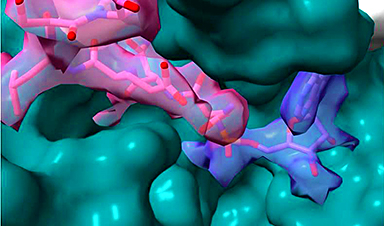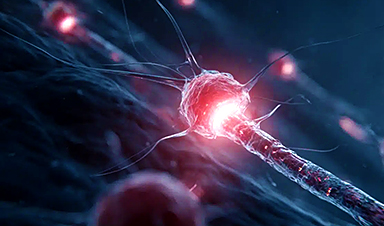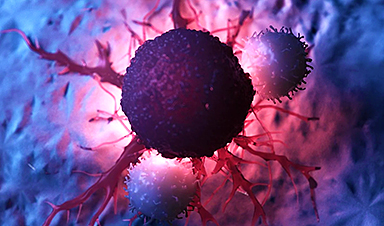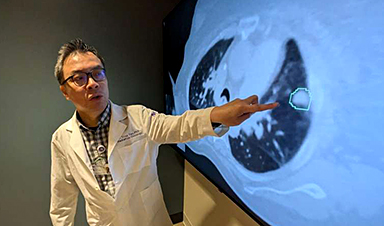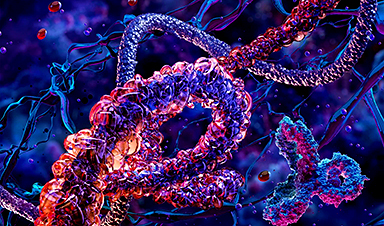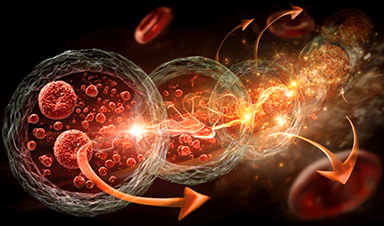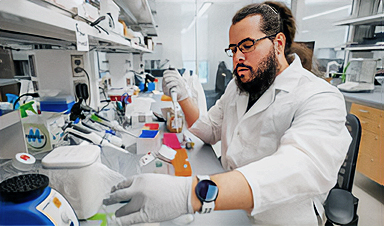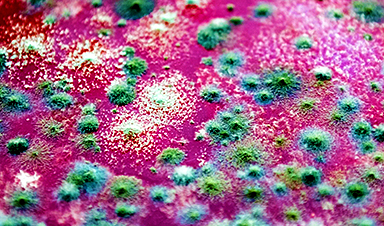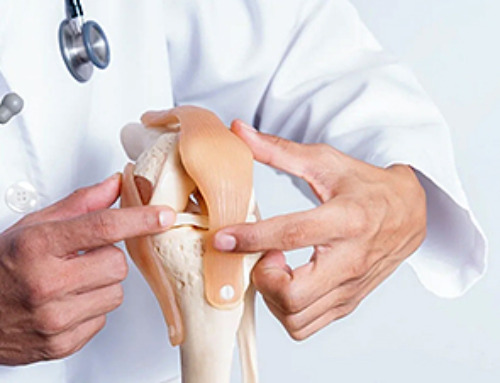Nanotechnology, which involves working with materials at the atomic or molecular level, is becoming increasingly important in space exploration. By improving strength, thermal stability, electrical conductivity, and radiation resistance, nanotechnology is helping create lighter, more durable spacecraft, better life support systems, and stronger protective gear for astronauts.1
Nanomaterials in Spacecraft Construction
Materials like carbon nanotubes (CNTs) and graphene reduce spacecraft weight while enhancing durability against radiation, extreme temperatures, and the vacuum of space. These improvements lower launch costs and enhance mission performance.2
CNTs are known for their impressive strength-to-weight ratio, thermal stability, and radiation resistance.2 They can achieve tensile strengths up to 63 GPa—far exceeding that of steel while being significantly lighter. Similarly, graphene, a two-dimensional nanomaterial, offers excellent thermal conductivity (approximately 5000 W/m·K) and electrical properties, making it useful for thermal management and electronic components.3
NASA is actively integrating nanotechnology into spacecraft materials. The Super Lightweight Aerospace Composites (SAC) project, for example, is working to replace traditional materials like aluminum, titanium, and carbon fiber-reinforced polymers with CNT-based composites.
Nanotechnology in Space Suits and Protective Equipment
Radiation Protection
Radiation is one of the biggest dangers for astronauts, particularly on missions beyond Earth’s protective magnetosphere. Traditional spacesuit materials offer limited shielding against cosmic rays and solar radiation, but nanotechnology provides new solutions.
Advanced nanomaterials like boron nitride nanotubes (BNNTs) are being explored for radiation protection, as they have strong neutron absorption properties and a lightweight structure.2,4 Graphene-based materials, due to their dense molecular structure, also provide excellent radiation deflection and absorption.2
Recent research by Cheraghi et al. has shown that converting raw boron nitride (BN) into nanotubes and aerogels has significantly improved shielding capabilities. Adding hydrogen-rich materials enhances their ability to block harmful radiation.5
Advanced Spacesuit Fabrics
Implementing nanotechnology into space suit design makes them more flexible, durable, and resistant to space hazards like micrometeoroid impacts. Traditional spacesuits can be rigid, limiting astronaut movement during extravehicular activities (EVAs). CNTs and graphene-based nanofibers, when woven into textiles, create lightweight but strong fabrics that allow greater flexibility without sacrificing safety.1, 6
These materials also improve elasticity in key suit components, reinforcing joints and articulation points for better movement in microgravity.1 Additionally, nano-coatings increase abrasion resistance and protect against micrometeoroid impacts. Innovations like phase-change materials (PCMs) integrated into nanocomposite fabrics help regulate body temperature, ensuring astronaut comfort in extreme space conditions.7
Nanotechnology in Life Support Systems
Water purification is essential to life support systems in space, providing a reliable supply for drinking, cooling, and oxygen generation. Traditional water recycling systems are effective but face limitations in efficiency and durability in space environments.
Nanotechnology improves these systems. Nanofiltration membranes made from materials like graphene oxide remove contaminants such as heavy metals, salts, and microbial pathogens while maintaining high water quality. These membranes are also highly durable, which is important for long-duration missions to the Moon and Mars.2, 8
Spacecraft operate in a closed-loop environment, where air must be continuously purified, and CO2 levels must be controlled to maintain a habitable atmosphere.2 Metal-organic frameworks (MOFs), which have a high surface area and tunable porosity, capture CO2 and, in some cases, facilitate its conversion into oxygen.2, 9
Nanotechnology also enhances air filtration. Advanced filters remove trace contaminants such as volatile organic compounds (VOCs) and airborne particulates, improving air quality and reducing health risks for astronauts.2, 8
NASA’s Clean Water Program is a prime example of how nanotechnology is transforming life support systems. The program uses nano-based filtration to purify and recycle water on the International Space Station (ISS).12 The European Space Agency (ESA) is also developing nanomaterial-based systems to improve air and water purification, focusing on long-term sustainability and efficient resource use.13
Robotics and Nanotechnology in Space Exploration
Nanotechnology is advancing space robotics by enabling the development of more efficient sensors and actuators. These improvements enhance the performance of robotic systems used in planetary exploration and satellite maintenance. Nanoscale materials, such as CNTs and graphene, are integral in creating lightweight, robust components that improve the sensitivity and precision of robotic systems.10
The integration of artificial intelligence (AI) with nanotechnology increases the autonomy of space robots. AI-driven systems process data in real time, predict environmental changes, and adapt to unexpected challenges. This capability is essential for missions that require independent decision-making, such as navigating rough terrain or conducting satellite repairs without direct Earth-based control.11
NASA’s Perseverance Rover demonstrates how nanotechnology and AI improve robotic performance in extreme environments. The rover’s Planetary Instrument for X-ray Lithochemistry (PIXL) is a spectrometer that uses AI and nanoscale engineering to map the chemical composition of Martian minerals. PIXL emits focused X-ray beams to analyze surface elements and autonomously detects and prioritizes promising targets. This approach reduces data collection time while increasing scientific accuracy.14
Future Potential of Nanotechnology in Space Exploration
Nanotechnology has the potential to improve deep space missions, including Mars exploration and interstellar travel. By making materials lighter, stronger, and more efficient, it is becoming an essential tool in next-generation space exploration.
For these advancements to be fully realized, scalable and cost-effective production methods for nanomaterials are needed. Collaboration among materials scientists, aerospace engineers, and biologists will be crucial. AI and machine learning will also help accelerate the development and deployment of nano-enabled technologies, making space missions more efficient and autonomous.
As research continues, nanotechnology will likely shape the future of space travel in ways we are only beginning to understand. If you want to learn more about space technologies, consider exploring developments in propulsion systems, in-situ resource utilization, and extraterrestrial habitat construction. Additionally, you may find these articles insightful:
- Can We Really Live on the Moon? Komatsu’s Vision for Lunar Construction
- A Guide to the Space Exploration Technologies of Today
- Machine Learning Predicts Aerospace Pressure Fluctuations
- The Role of Steel in Pioneering Aerospace Innovations
- Understanding Cosmic Particle Acceleration
References and Further Readings
1. Phogat, P.; Shreya; Jha, R.; Singh, S. (2024). The Role of Nanotechnology in Space Exploration and Colonization. Nanotechnology in Societal Development. https://link.springer.com/chapter/10.1007/978-981-97-6184-5_12
2. Elabiad, S. (2025). Nanotechnology for Space Exploration. [Online] SSRN. Available at: https://papers.ssrn.com/sol3/papers.cfm?abstract_id=5080329
3. Kumar, A.; Sharma, K.; Dixit, AR. (2020). Carbon Nanotube-and Graphene-Reinforced Multiphase Polymeric Composites: Review on Their Properties and Applications. Journal of Materials Science. https://link.springer.com/article/10.1007/s10853-019-04196-y
4. Ryu, K.-H.; Kang, M.; Kim, J.; You, N.-H.; Jang, S. G.; Jeong, K.-U.; Ahn, S.; Kim, D.-Y. (2024) Spacesuit Textiles from Extreme Fabric Materials: Aromatic Amide Polymer and Boron Nitride Nanotube Composite Fiber for Neutron Shielding and Thermal Management. Advanced Fiber Materials. https://link.springer.com/article/10.1007/s42765-024-00432-6
5. Cheraghi, E.; Chen, S.; Yeow, JT. (2021). Boron Nitride-Based Nanomaterials for Radiation Shielding: A Review. IEEE Nanotechnology Magazine. https://ieeexplore.ieee.org/document/9403728
6. Kumari, D.; Phogat, P.; Singh, S.; Jha, R. (2024). Enhanced Electrochemical Behavior of C@ Cds Core-Shell Heterostructures. Materials Science and Engineering: B. https://www.sciencedirect.com/science/article/pii/S0921510724000394
7. Kumar, T.; Phogat, P.; Sahgal, V.; Jha, R. (2023). Surfactant-Mediated Modulation of Morphology and Charge Transfer Dynamics in Tungsten Oxide Nanoparticles. Physica Scripta. https://iopscience.iop.org/article/10.1088/1402-4896/ace566/meta
8. Arroyo, CL.; Concepcion, R.; Bandala, A. (2023). Identifying the Future Trends of Bioregenerative Life Support Systems for Space Exploration. [Online] IEEE. Available at: https://ieeexplore.ieee.org/abstract/document/10589031
9. Kong, F.; Chen, W. (2024). Carbon Dioxide Capture and Conversion Using Metal–Organic Framework (Mof) Materials: A Comprehensive Review. Nanomaterials. https://pmc.ncbi.nlm.nih.gov/articles/PMC11356948/
10. Russo, A.; Lax, G. (2022). Using Artificial Intelligence for Space Challenges: A Survey. Applied Sciences. https://www.mdpi.com/2076-3417/12/10/5106
11. Kumar, S.; Tomar, R. (2018). The Role of Artificial Intelligence in Space Exploration. [Online] IEEE. Available at: https://ieeexplore.ieee.org/abstract/document/8668161
12. Gaskill, ML. (2023). NASA Achieves Water Recovery Milestone on International Space Station [Online] NASA. Available at: https://www.nasa.gov/missions/station/nasa-achieves-water-recovery-milestone-on-international-space-station/
13. ESA. (2021). How ESA technology contributes to worldwide water security. [Online] ESA. Available at: https://www.esa.int/Enabling_Support/Preparing_for_the_Future/Space_for_Earth/How_ESA_technology_contributes_to_worldwide_water_security
14. NASA. (2024). Here’s How AI Is Changing NASA’s Mars Rover Science. [Online] NASA. Available at: https://www.nasa.gov/missions/mars-2020-perseverance/heres-how-ai-is-changing-nasas-mars-rover-science/
News
Repurposed drugs could calm the immune system’s response to nanomedicine
An international study led by researchers at the University of Colorado Anschutz Medical Campus has identified a promising strategy to enhance the safety of nanomedicines, advanced therapies often used in cancer and vaccine treatments, [...]
Nano-Enhanced Hydrogel Strategies for Cartilage Repair
A recent article in Engineering describes the development of a protein-based nanocomposite hydrogel designed to deliver two therapeutic agents—dexamethasone (Dex) and kartogenin (KGN)—to support cartilage repair. The hydrogel is engineered to modulate immune responses and promote [...]
New Cancer Drug Blocks Tumors Without Debilitating Side Effects
A new drug targets RAS-PI3Kα pathways without harmful side effects. It was developed using high-performance computing and AI. A new cancer drug candidate, developed through a collaboration between Lawrence Livermore National Laboratory (LLNL), BridgeBio Oncology [...]
Scientists Are Pretty Close to Replicating the First Thing That Ever Lived
For 400 million years, a leading hypothesis claims, Earth was an “RNA World,” meaning that life must’ve first replicated from RNA before the arrival of proteins and DNA. Unfortunately, scientists have failed to find [...]
Why ‘Peniaphobia’ Is Exploding Among Young People (And Why We Should Be Concerned)
An insidious illness is taking hold among a growing proportion of young people. Little known to the general public, peniaphobia—the fear of becoming poor—is gaining ground among teens and young adults. Discover the causes [...]
Team finds flawed data in recent study relevant to coronavirus antiviral development
The COVID pandemic illustrated how urgently we need antiviral medications capable of treating coronavirus infections. To aid this effort, researchers quickly homed in on part of SARS-CoV-2's molecular structure known as the NiRAN domain—an [...]
Drug-Coated Neural Implants Reduce Immune Rejection
Summary: A new study shows that coating neural prosthetic implants with the anti-inflammatory drug dexamethasone helps reduce the body’s immune response and scar tissue formation. This strategy enhances the long-term performance and stability of electrodes [...]
Scientists discover cancer-fighting bacteria that ‘soak up’ forever chemicals in the body
A family of healthy bacteria may help 'soak up' toxic forever chemicals in the body, warding off their cancerous effects. Forever chemicals, also known as PFAS (per- and polyfluoroalkyl substances), are toxic chemicals that [...]
Johns Hopkins Researchers Uncover a New Way To Kill Cancer Cells
A new study reveals that blocking ribosomal RNA production rewires cancer cell behavior and could help treat genetically unstable tumors. Researchers at the Johns Hopkins Kimmel Cancer Center and the Department of Radiation Oncology and Molecular [...]
AI matches doctors in mapping lung tumors for radiation therapy
In radiation therapy, precision can save lives. Oncologists must carefully map the size and location of a tumor before delivering high-dose radiation to destroy cancer cells while sparing healthy tissue. But this process, called [...]
Scientists Finally “See” Key Protein That Controls Inflammation
Researchers used advanced microscopy to uncover important protein structures. For the first time, two important protein structures in the human body are being visualized, thanks in part to cutting-edge technology at the University of [...]
AI tool detects 9 types of dementia from a single brain scan
Mayo Clinic researchers have developed a new artificial intelligence (AI) tool that helps clinicians identify brain activity patterns linked to nine types of dementia, including Alzheimer's disease, using a single, widely available scan—a transformative [...]
Is plastic packaging putting more than just food on your plate?
New research reveals that common food packaging and utensils can shed microscopic plastics into our food, prompting urgent calls for stricter testing and updated regulations to protect public health. Beyond microplastics: The analysis intentionally [...]
Aging Spreads Through the Bloodstream
Summary: New research reveals that aging isn’t just a local cellular process—it can spread throughout the body via the bloodstream. A redox-sensitive protein called ReHMGB1, secreted by senescent cells, was found to trigger aging features [...]
AI and nanomedicine find rare biomarkers for prostrate cancer and atherosclerosis
Imagine a stadium packed with 75,000 fans, all wearing green and white jerseys—except one person in a solid green shirt. Finding that person would be tough. That's how hard it is for scientists to [...]
Are Pesticides Breeding the Next Pandemic? Experts Warn of Fungal Superbugs
Fungicides used in agriculture have been linked to an increase in resistance to antifungal drugs in both humans and animals. Fungal infections are on the rise, and two UC Davis infectious disease experts, Dr. George Thompson [...]






